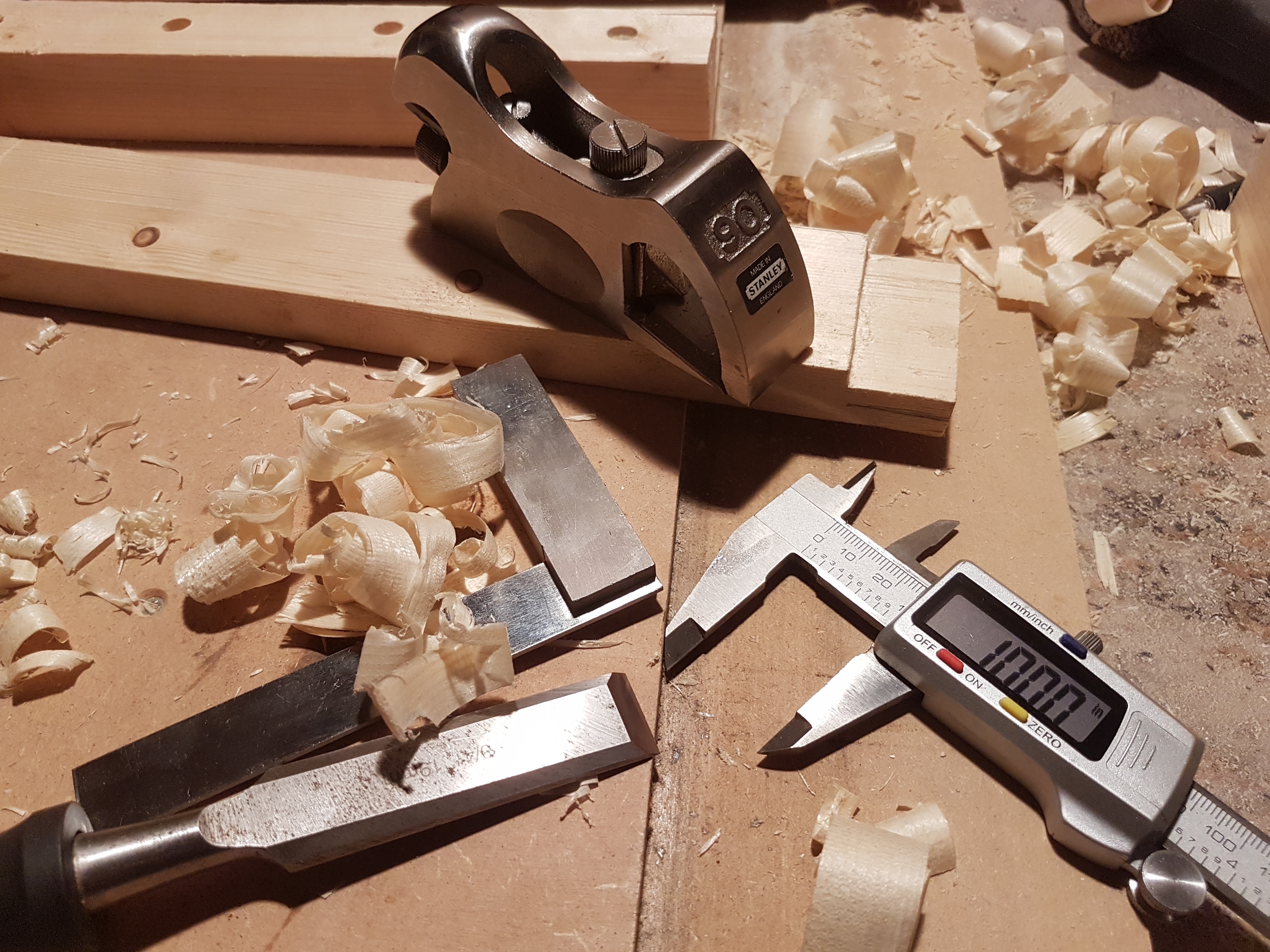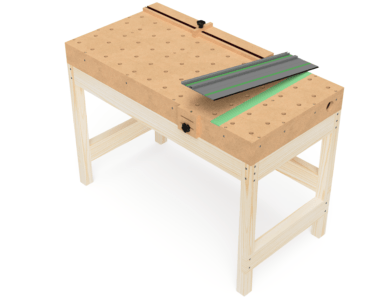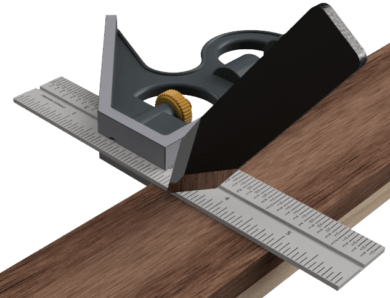
What really happens when you skew your plane?
I was listening to a Fine Woodworking Shop Talk Live podcast recently and they seemed to be a bit confused about what skewing a plane does to cutting geometry and why it’s better on difficult woods. I was curious to find out what really happens when you skew your plane. So I did some research to provide a definitive answer.
What is skewing a plane?
When you’re planing you normally plane along the board in the direction of the grain, with the plane body aligned with the board’s grain. Skewing the plane is when you rotate the plane body in relation to the grain, say 45° but still push it in the direction of the grain.

So you’re not pushing your plane across the board at 45° like you may do when flattening with a jointer. But you are planing in the normal way, only with the plane at an angle.
Plane iron bed angle
Your plane iron, or blade, in a regular bevel-down #4 bench plane has a bed angle of 45°. That means the cutting edge meets the wood at 45°, unless you change the frog for one of a different angle.
Tear-out and what causes it
On difficult woods such as curly maple, or woods with an interlocking grain like iroko, grain changes direction. Meaning that you may end up cutting against the grain and suffer from tear-out. Tear-out happens when the blade cutting edge lifts the wood fibres before severing them. After being cut the wood fibres either relax below the planed surface or stay upright showing end-grain at the surface, causing the unsightly surface imperfections known as tear-out.
Preventing or reducing tear-out
Conventional wisdom when tear-out occurs is to plane in the opposite direction, reduce the mouth opening (if possible), sharpen your blade, increase the cutting angle of the blade or skew the plane.
Planing in the opposite direction is obvious, it means you’re not planing into the ends of the wood fibres (like stroking a cat backwards) and so shouldn’t get tear-out. However, that’s not going to work on curly figure or interlocking grain because the grain is switching direction constantly.
Reducing the mouth opening helps support the fibres ahead of the blade and prevents them from lifting. But there is a limit to how narrow you can make the mouth, because you still need the shaving to fit through.
Sharpening the plane iron or blade can help or it can make the tear-out worse. A sharper blade will cut the fibres more easily, but it will also get underneath and lift them more easily.
Increasing the cutting angle helps to prevent the blade from lifting the fibres before they’re cut. Therefore, reducing the amount of tear-out.
The best outcome is often when you skew your plane, but why?
So what really happens when you skew your plane?
Three things happen when you plane wood with your plane skewed. Firstly, you change the way your blade cuts through wood fibres from a chopping cut to a slicing cut. The more you skew your plane the greater the slicing action will be.
You also change the distance between the leading edge of the blade and the trailing edge of the toe. Effectively making the mouth wider. This is not going to help you, but the other two factors are.
The third factor is that the effective blade angle changes. That’s the angle between the wood in the direction of the grain and the blade. It becomes steeper the more you skew your plane.
How blade angle changes with skew
Don’t believe me? Take a look below at three skew angles and their effective blade angles.
Same plane, same bed angle, just skewed at different angles. Look how the effective angle changes as the plane is skewed more.
So, if you’re looking to increase your effective cutting angle to 55° (a common high-angle frog) then by skewing your regular plane to 45° you’re going to achieve essentially the same outcome. Only now you’re also cutting the fibres with a slicing action.




The blade angle actually lowers when you skew the plane, not increases.
The reason it appears to be increasing in the diagram is because the blade angle line is being drawn orthogonal to the cutting direction! Instead, imagine the blade angle line (running in the planing direction) resting on the plane blade. As you skew the plane from straight, the line starts from resting at the top of the blade and comes down the side of it until eventually it reaches the wood surface (when the plane has been skewed 90 deg) for an effective cutting angle of 0!! That’s why skewing also does great on end grain!
The reason it reduces tearout probably has more to do with the slicing action cutting the fibers.